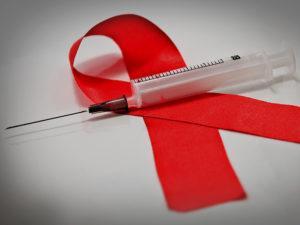 AIDS 2016 was a meeting of the world’s foremost HIV/AIDS researchers in both the social and biological sciences. The conference, whose theme was “Accessing Equity Rights Now,” focused on the needs of “key populations.”
AIDS 2016 was a meeting of the world’s foremost HIV/AIDS researchers in both the social and biological sciences. The conference, whose theme was “Accessing Equity Rights Now,” focused on the needs of “key populations.”
Key populations are defined as groups that are especially vulnerable to HIV infection and prosecution because of their lifestyles. Key populations include men who have sex with men (MSM), intravenous drug users (IDUs), and sex workers. Unfortunately, these key populations continue to be persecuted in places that also experience high HIV prevalence rates, exacerbating the situation at hand. The conference should also be lauded for giving primary attention to the needs and issues of Sub-Saharan Africans and their key populations in the majority of its talks.
The conference, which was attended by dignitaries and celebrities all calling for the end of HIV/AIDS, focused on research on how to improve the lives of these key populations. As a member of the media, I was able to attend a number of press conferences that focused on breakthroughs in how to improve access to treatment for these key populations.
The conference’s multidisciplinary approach was appreciated, as someone interested in HIV from its biological and social aspects. For example, the conference balanced discussions on the potential of HIV cures and vaccines, and also research on the social factors leading to HIV infection in adolescents. All in all, the event covered all of the bases possible; it was truly an informative, educational, and above all, inspiring event on the ongoing HIV/AIDS epidemic.
However, the conference wasn’t perfect. While the event was undoubtedly on the right track – I’m sure almost all attendees would agree that HIV/AIDS could use more funding and key populations need equity rights – it often didn’t discuss how exactly it would get there. The many celebrity speakers were phenomenal in rousing the crowd, but failed to provide concrete solutions to the HIV/AIDS epidemic. Other attendees of the conference criticized how repetitive the conference could be.
On the other hand, a number of HIV/AIDS scientific advances were discussed with concrete findings. As discussed in recent Immunopaedia Breaking News articles (Treating Aids in 2016, and Aids 2016: Towards an HIV Cure for example) the scientific findings were promising. I look forward to hearing more about the potential of gene editing and advances in ART in the next five years.
The thousands of attendees may not all agree on the best way to solve the HIV/AIDS epidemic. However, I’m certain that everyone at the conference can agree on one thing – we need to aim for the United Nations’ goal of eliminating HIV/AIDS transmission by 2030. As long as the work of the researchers and activists seen at AIDS 2016 continues, I’m sure we can slow this epidemic soon.
Article by Shaan Bhambra











